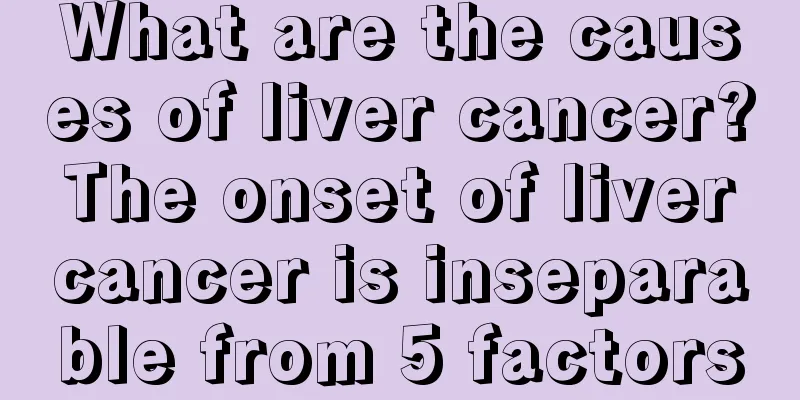What are the symptoms of vascular aging

|
Growing old is something we cannot refuse. When we are young, we say we are growing up slowly. When we reach a certain age, we say we are getting old slowly. So growing old is also a kind of growing up. Not only our appearance will change, but our organs will also change. Blood vessel aging is also one of the signs of declining body function. There are also some signs of vascular aging. What are the symptoms of vascular aging? Feeling sleepy after eating; Forget about the things you are familiar with in your daily life; The brain is unable to think creatively or accept new ideas; Feeling cold, weak, or numb in your hands and feet for a long time; Headache; Prolonged insomnia; Chest tightness, heart pain; Easy to get out of breath when carrying things and walking; It is easy to have calf pain when walking, which will be fine after a rest; Before understanding the harm of vascular aging, let's take a small test Observation: If you clench your fist for 30 seconds and then open it, will the whitening of your palm disappear immediately or will it last for a while? The first situation: After opening your palm, it will quickly return to its original color. This indicates that the blood vessels are healthy, elastic, blood circulation is normal, and the peripheral nerves are relatively sensitive. The second situation: It takes more than 20 seconds for the skin color to return to normal. If this happens, be careful, as your body may have arteriosclerosis. What are the five major hazards of vascular aging? First, vascular aging leads to decreased body function Aging of blood vessels in specific parts of the body can cause a variety of functional declines, such as carotid artery sclerosis leading to cerebral ischemia and cerebral infarction; aortic sclerosis can lead to thoracic and abdominal aortic aneurysms, which are life-threatening. Second, carotid artery sclerosis and decreased heart and brain function Carotid artery plaque mainly refers to carotid atherosclerotic lesions, most of which are arterial stenosis and are local manifestations of systemic arteriosclerosis. Patients often have sclerosis of the intracranial arteries, coronary arteries of the heart, and lower limb arteries, which lead to corresponding symptoms. Third, varicose veins, difficulty standing There are many factors that cause varicose veins. It is more common among people who do long-term manual labor or whose jobs require long periods of standing (teachers, traffic police, salespersons, barbers, chefs, etc.). The disease affects their standing and walking. Sequelae of deep vein thrombosis and arteriovenous fistula can also manifest as limb swelling and compensatory superficial varicose veins Fourth, blood vessels become brittle and hard, and their mobility decreases Hypertension, diabetes and hyperlipidemia accelerate vascular hardening, which in turn further increases blood pressure, forming a vicious cycle. Fifth, blood vessel blockage and poor memory Artery blockage can cause ischemia, necrosis or functional impairment of the organs and limbs they supply; chronic cerebral ischemia can cause drowsiness, memory loss, and inability to concentrate. |
<<: What kind of fabric is good for people who sweat a lot?
>>: Is it normal to sweat during exercise in the dog days of summer?
Recommend
Hemangioma in the lips
The growth of hemangioma inside the lips may be c...
What are the benefits of kissing
Kissing is something that many couples do. For lo...
How to do dietary care after bladder cancer surgery?
How to do dietary care after bladder cancer surge...
How to remove facial fat
Every one of us hopes to become more beautiful an...
Can lymphoma be cured
Lymphoma is a malignant tumor that affects the ly...
What is the appropriate diet for patients with advanced lung cancer? Patients with advanced lung cancer should eat more of three types of food
The treatment of lung cancer has always been a pr...
Can nasopharyngeal endoscopy detect laryngeal cancer?
Can nasopharyngeal laryngoscope detect laryngeal ...
What to do if lumbar stenosis compresses the nerves? Surgery is required in these cases
Lumbar stenosis can cause pain in the waist and l...
How to perform surgery for stage III tongue cancer
How to perform surgery for stage III tongue cance...
What is the reason for bones making cracking sounds when walking
Joints are important components that connect vari...
Chinese herbal medicine for treating high blood sugar
There are three main problems faced by modern mid...
What is the best food for high blood pressure
Many friends suffer from high blood pressure due ...
What are the signs of nasopharyngeal cancer and how to treat it
The earlier nasopharyngeal cancer is treated, the...
Which foods can prevent prostate cancer?
Prostate cancer is a disease that is extremely ha...
What to eat when the wound hurts due to thyroid cancer
The pain of the incision after thyroid cancer sur...









